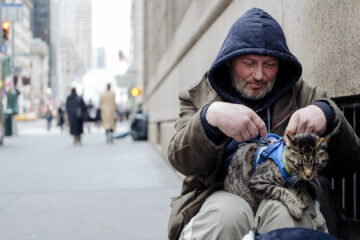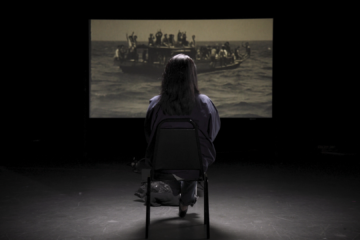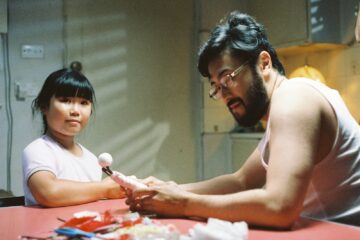Filmed with local crews in partnership with the United Nations Development Programme and shot around the world from the Andes to Sierra Leone to Vietnam, For Tomorrow is the story of grassroots innovators dedicated to fighting some of today’s most pressing sustainability issues. Viet Film Fest 2023 proudly presents An Tran’s directorial debut in this documentary that addresses innovation, sustainable solutions, and community building. In this interview with Tran, she discusses the unique challenges of making her documentary – emphasizing global grassroots solutions to addressing the world’s most pressing problems
How would you describe the process of making a documentary, and what are some of the elements or aspects of it that you found appealing or challenging when producing For Tomorrow?
Making a documentary is like cooking up a feast where you know some ingredients ahead of time and, as you start preparing, new components come flying your way. You start out with ideas for the menu and have to constantly adapt. The outcome might be completely different from your initial idea, but overall, you still have to host a nourishing and flavorful dinner party.
What I love about filmmaking is creating portraits of people and really letting their personalities shine through. On For Tomorrow, we set out to celebrate the ingenuity of everyday people and explore how innovation is not only relegated to Silicon Valley or “high tech.” We wanted to challenge biases and preconceptions that talent and intellectual capacity are not limited to specific geographic regions or privileged backgrounds. In prep, I tried to connect as much as possible with our protagonists before filming to get a sense of their personalities, the places they lived in and the issues that they were dealing with.
What was unusual on For Tomorrow was how it was shot. We started production during the pandemic; international travel was heavily restricted. Local crews were enlisted in Sierra Leone, Azerbaijan, India, Peru, Guinea, Guatemala, Korea, Vietnam and the US while I directed remotely over Zoom or WhatsApp. There were also natural disasters, war and a coup during production. We were constantly rearranging schedules and ensuring our crews would be safe. It’s normal in documentaries to constantly react to changes that you can’t foresee, this was another level!
Could you share your experience of working with local crews from across the world, and how these collaborations became possible?
Our production companies Sid Lee and Nation of Artists had extensive contacts all over the world. Our producer Sue-Ellen Chitunya diligently hunted down crew people who I would interview so we could assemble our teams.
With visual consultant Svetlana Cvetko, I created a filming guide for each crew to follow so that we could have a consistent visual language. Although this was a documentary and a lot of unexpected things were happening, each local cinematographer and I would come up with shot lists.
I also encouraged our crew to film what they thought was important to them. Ultimately, they are from these communities, they know it better than I would. They are there in person and it’s important to me that we all make the film together. I always trust my crew to capture what they find interesting. Things can change quickly in documentaries and you have to move fast to grab a shot or you might miss it and it may never happen again.
Surprisingly, when we were in the thick of shooting, it felt intimate. On Zoom, I could see the frame and we could talk to each other. We could still make adjustments on the fly. If there was no internet connection I would call and rely on audio as the DP texted screen grabs and video for approval. If there was no connection whatsoever, they would go off all my notes. I wouldn’t know what was captured until it was all uploaded.
Making a film this way took more effort and was very tedious at times. Despite the distances, we were still connected and communicating. I’m really proud of what we pulled off, I don’t think anyone can tell it was directed remotely.
The film introduces many grassroots innovators who have invented their own sustainable solutions to a specific issue. How were they chosen to be a part of this project?
The documentary was inspired by the fascinating website fortomorrow.org, which celebrates and empowers people to share their creative sustainability solutions. Created in partnership with the United Nations Development Programme and Hyundai, it’s a place to connect with innovators, resources and inspiration to help build a better world.
For the film, we chose the participants from the website. Our lead researcher/lead story producer Lysandre Leduc-Boudreau had done extensive research on many of the innovators. We wanted to show that innovation could come in many forms – from building a solar car from trash to fighting for disability rights to turning household trash into cleaning detergent. It was also important to show that anyone could be an innovator. I wanted to show different ages and parts of the world. I also wanted to highlight that innovation can come from our past. In this age of doom and gloom, what struck me was there were all these very passionate people all over the world trying to make a difference with very little means.
How can we start (re)thinking about the close relationships between sustainability, equity, and justice with this film?
All of these are intertwined. If you look at who benefits from these injustices and the way our world has been working – it’s designed this way. I wanted to highlight different examples of what people are doing and show “the people closest to the problem know the most about that problem” as Gina Luccarelli says in the film. There are people all over the world who have the solution, but have been dismissed. Instead of economic profit as the main goal, it’s possible to drive towards a future where the end goal is health – health for the planet, health for the community and individuals. We must do it together and design the world with our most vulnerable in mind first and not simply benefiting those at the top.
The goal of supporting and connecting the grassroots innovators seems to be not only about solving actual problems but also building a community of knowledge and support. What would be some of the examples of “communal efforts?” If we are none of the grassroots innovators, corporate directors, government officials, or UNDP personnel, what can we do to contribute to maintaining/sustaining this community?
In Vietnam, Hồng Thị Trịnh employs disadvantaged people to make cleaning enzymes from their homes. She doesn’t like to call them her workers, but her partners.She doesn’t keep her formula a secret and openly shares it so more people can make it to save money while cleaning up the environment. Instead of working only for profit, she is focused on uplifting people out of poverty.
In Azerbaijan, writer and disability activist Jamila Mammadli was frustrated with lack of access on the Baku metro. She made a video that went viral and caught the attention of officials. It is through the support of the community that changes were made.
Another example of communal efforts in the film include the 10 de Agosto Farming Collective in Peru. They are a group of farmers high up in the Andes who have maintained the culture of “ayni” – collective, reciprocal work since ancient times.They build terraces and irrigation canals together using Incan technology. It’s not “give and take” in a transactional manner. This is simply how they live, by doing it together. We had to include them in the film because of this approach. It’s what we need more of.
(Interviewed by Jiyon Byun)
####
For Tomorrow be streaming virtually on Eventive as part of Viet Film Fest 2023.
ABOUT AN TRAN
An Tran is a director and producer based in Los Angeles and Vietnam. She is known as a versatile filmmaker who makes engaging, thought-provoking content. She is especially interested in amplifying the voices of independent filmmakers of the Global South on an international scale.
She is a Film Independent Producers Lab Fellow, an IFP Emerging Narrative alumni and Project: Involve Fellow for writing & directing. An is a member of the Producers Guild of America and has served as a Film Mentor for the SXSW Film Festival and Locarno Open Doors in addition to advising for Film Independent’s Fast Track and Industry Connect Programs.
The daughter of political refugees who fled Vietnam at the end of the war, An was born and raised in South Bend, Indiana. Her family ran a Chinese restaurant (yes, Chinese) where customers witnessed her ringing up the cash register and waiting on tables. These experiences of her family growing up in the Midwest and then returning to Vietnam inspired the feature documentary “Tran 5” (now in post).
She is a graduate of the University of Southern California’s School of Cinematic Arts and School of English.
VIET FILM FEST 2023
September 30th to October 15th, 2023
Program Schedule and Tickets:
https://vff2023.eventive.org/welcome
Follow @vietfilmfest on Facebook, Instagram, and YouTube



0 Comments